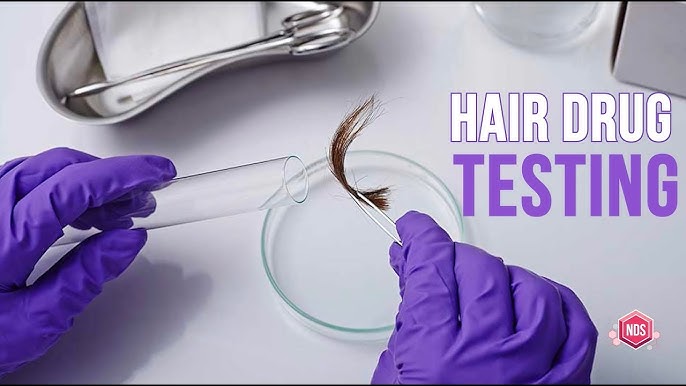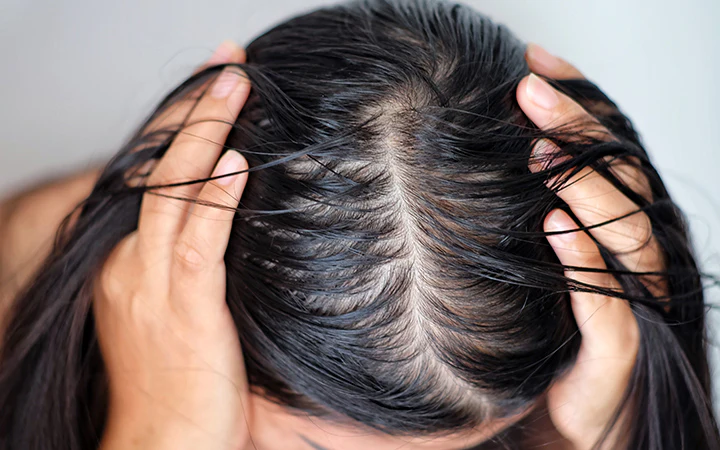Hair follicle drug testing is a highly effective method used to detect drug use or misuse by analyzing a small sample of hair. It’s commonly employed to screen for illegal drugs, misuse of prescription medications, and even legal substances like alcohol and tobacco. Unlike urine or blood tests, hair follicle drug tests have a much longer detection window, making them a reliable option for identifying chronic or long-term drug use. With such a comprehensive approach, many people find themselves wondering how to pass a hair follicle drug test. While the internet is filled with suggestions, the real challenge lies in understanding what actually works and why this method is so hard to cheat.
This post will explore everything you need to know about hair follicle drug testing—from how it works, what substances it can detect, the benefits, challenges, and some practical tips for getting the most accurate results.
What is Hair Follicle Drug Testing?
Hair follicle drug testing detects drugs and drug metabolites in the core of the hair shaft, which is formed in the hair follicle. When a person consumes drugs, the substance enters their bloodstream and is eventually deposited into the hair follicles as the hair grows. This allows traces of drugs to be stored in the hair for extended periods.
Key Advantages:
- Long detection window: Hair testing can detect drug use for up to 90 days with a standard 1.5-inch hair sample. This is significantly longer than urine or blood tests.
- Patterns of use: The test can estimate drug use patterns over time, providing insight into long-term behaviours.
- Difficult to cheat: Since drugs are integrated into the hair shaft, it’s harder to tamper with the results compared to other methods like urine tests.
Purpose of Hair Follicle Drug Testing
Hair follicle drug tests are used for a variety of purposes:
- Employment Testing: Employers often use drug testing to ensure workplace safety and productivity. Hair tests may be used during pre-employment screenings, random tests for current employees, or post-incident investigations.
- Forensic and Legal Testing: Hair samples are collected in criminal investigations or legal cases, especially when drug use is a relevant factor, such as in cases of drug-facilitated crimes or child protection cases.
- Medical Testing: In rare cases, doctors may order hair drug tests for medical evaluations, such as understanding long-term drug use in post-mortem analyses or addiction treatment programs.
- Drug Rehabilitation Programs: Hair testing is also used in rehab centers to monitor patients for chronic drug use or to confirm periods of abstinence during recovery.
What Does the Hair Follicle Drug Test Measure?
Hair follicle drug tests measure the presence of drugs or drug metabolites in hair. Metabolites are the byproducts formed when the body breaks down drugs.
Once a drug is ingested, it travels through the bloodstream and is deposited into the hair shaft through the hair follicle, sweat, and oil glands. Since hair grows at an average rate of about half an inch per month, a 1.5-inch sample typically gives a 90-day history of drug use.
Substances Detected by Hair Follicle Tests:
- Alcohol (Ethanol): Detects EtG and FAEEs, alcohol metabolites.
- Amphetamines: Includes drugs like methamphetamine and MDMA.
- Cocaine: Identifies cocaine and its metabolite benzoylecgonine.
- Marijuana (THC): Looks for the THC-COOH metabolite.
- Nicotine and Cotinine: Measures tobacco consumption.
- Opiates: Detects drugs like heroin (6-monoacetylmorphine), morphine, and codeine.
- Phencyclidine (PCP): Detects the drug itself.
How Does Hair Follicle Drug Testing Work?
- Sample Collection: A small lock of hair, about the thickness of a pencil, is cut as close to the scalp as possible, usually from the back of the head. This ensures that the sample reflects recent drug use. If scalp hair isn’t available, hair from other body parts, like the arms or legs, may be collected.
- Lab Analysis: The hair sample is sent to a lab where it is first washed to remove external contaminants. After washing, the hair is tested using immunoassays or confirmatory tests like gas chromatography to identify specific drugs or metabolites.
- Results Interpretation: Results can be either:
- Positive: Indicates the detection of drugs or their metabolites in the hair sample.
- Negative: No drugs or metabolites are detected, or the levels are below the test’s cutoff value.
The Detection Window: How Long Can Drugs Be Found in Hair?
Hair drug tests have a detection window that depends on the length of hair tested. Typically, a standard 1.5-inch sample reflects about 90 days of drug use. However, longer hair can provide a history of months or even years.
For example:
- Scalp hair: A 1.5-inch sample provides a 90-day detection window.
- Body hair: Since body hair grows more slowly, samples from other areas may reflect drug use for up to 12 months.
Factors Affecting Test Accuracy
While hair follicle drug testing is highly reliable, several factors may affect the accuracy of results:
- Environmental Exposure: Secondhand exposure to drug smoke (e.g., cocaine or marijuana) could lead to trace amounts being deposited on hair, though labs wash samples to reduce this risk.
- Hair Color: Drugs tend to bind more easily to darker hair due to melanin, which can lead to higher concentrations of drugs in people with dark hair.
- Hair Treatments: Bleaching, dyeing, or heavy use of hair products can alter the concentration of drugs in hair. In some cases, chemically treated hair may not be suitable for testing.
- Low-Level Use: Occasional or low-level drug use may not be detectable, as the concentrations of drug metabolites might not be high enough to trigger a positive result.
Hair Drug Tests: Can You Cheat?
With the growing use of hair drug testing, there has been an increase in online videos and advice on how to cheat the test. Some suggested methods include shaving off all hair, using detox shampoos, and applying home remedies like tar shampoo, laundry detergent, detox salts, and vinegar. Some individuals even dye their hair after these treatments, hoping to conceal any alterations. But can these methods actually help someone pass a hair drug test?
Hair drug testing has become more common in employment screenings for several reasons. First, it offers a detection window of about 90 days, making it the drug test with the longest detection period. Second, samples are analyzed in a laboratory and verified by a Medical Review Officer (MRO), which adds credibility to the results. These results are difficult to tamper with and are often accepted in legal settings. Because of these characteristics, hair drug testing is often used for court-ordered testing.
Can You Cheat a Hair Follicle Test?
Hair drug tests, though accurate, can be invasive. The most reliable method involves cutting a sample of hair from the scalp, typically enough to fill two straws. To avoid visible bald patches, small amounts of hair are taken from different spots around the crown. The length of the hair sample can also impact the time frame that the test can examine. For instance, a 1.5-inch hair sample can detect drug use up to 90 days in the past.
Although many online methods seem promising, it is highly unlikely, if not impossible, for someone to manipulate their results to produce a negative outcome.
Can Metabolites Be Removed From Hair?
Hair drug tests do not focus on the outer layer of the hair. Instead, the test targets the inner part, which holds the key to detecting drugs. This is because hair grows from nutrients delivered by the blood. When drugs are used, the metabolites—the byproducts of the drugs—are transported through the bloodstream and get deposited into the growing hair strands. Once embedded, these metabolites cannot be removed.
This makes detox shampoos and other kits largely ineffective, as they only work on the outer layer of the hair. While some detox treatments may reduce the amount of metabolites slightly, the decrease is often minimal. People who use drugs frequently will have multiple metabolites in their hair, so even with slight reductions, the test will still likely return a positive result. Shaving the head or body hair might delay the test, but it will also raise suspicion, especially with potential employers.
Though more costly than urine or saliva tests, hair drug tests are highly accurate and frequently upheld in legal settings.
Pros and Cons of Hair Follicle Drug Testing
Pros:
- Extended Detection Period: Hair follicle drug tests can detect drug use over a much longer period than urine or blood tests.
- Difficult to Tamper With: Since drugs are embedded in the hair, it’s harder to manipulate or falsify results.
- Useful for Chronic Use: The test provides insight into long-term drug patterns, which can be valuable for monitoring chronic drug users or individuals in recovery programs.
Cons:
- Inability to Detect Recent Use: Drugs take about 7 to 10 days to show up in hair after use, so the test isn’t effective for detecting very recent consumption.
- Higher Cost: Hair testing can be more expensive than other types of drug tests, especially if a detailed panel is required.
- Potential Bias: Factors like hair colour or chemical treatments can affect test accuracy and lead to biased results.
Pro Tips for Hair Follicle Drug Testing
- Be Honest: If you’re being tested for employment or legal purposes, disclosing any recent drug use or medications that could affect your results is best. Being transparent can help in the interpretation of test results.
- Check for Confirmatory Testing: If using an at-home test, confirm whether the company offers a second test to confirm initial positive results, as immunoassays can sometimes yield false positives.
- Understand Your Rights: Different states and countries have various laws regarding drug testing. Familiarize yourself with the legal requirements and protections where you live or work.
Conclusion
Hair follicle drug testing is a powerful tool for detecting long-term drug use and offers a wider detection window than many other testing methods. While its challenges include potential biases due to hair colour or chemical treatments, its accuracy and durability make it a popular choice in the workplace, legal cases, and rehabilitation programs.
If you’re undergoing or considering a hair follicle drug test, understanding how it works, what substances it detects, and how to interpret the results will help you make informed decisions.
Frequently Asked Questions
1. How accurate are hair follicle drug tests? Hair tests are generally very accurate, but false positives can occur due to environmental contamination or inaccurate sample handling. This is why labs typically perform confirmatory testing after initial results.
2. Can a hair follicle test be done at home? Yes, at-home collection kits allow users to mail hair samples to a laboratory. These kits are convenient, but ensuring that the company offers confirmatory testing for any positive results is important.
3. What should I do before a hair follicle drug test? No special preparations are required, but it’s a good idea to inform the tester of any medications or supplements you’ve recently taken, as these can sometimes interfere with results.



